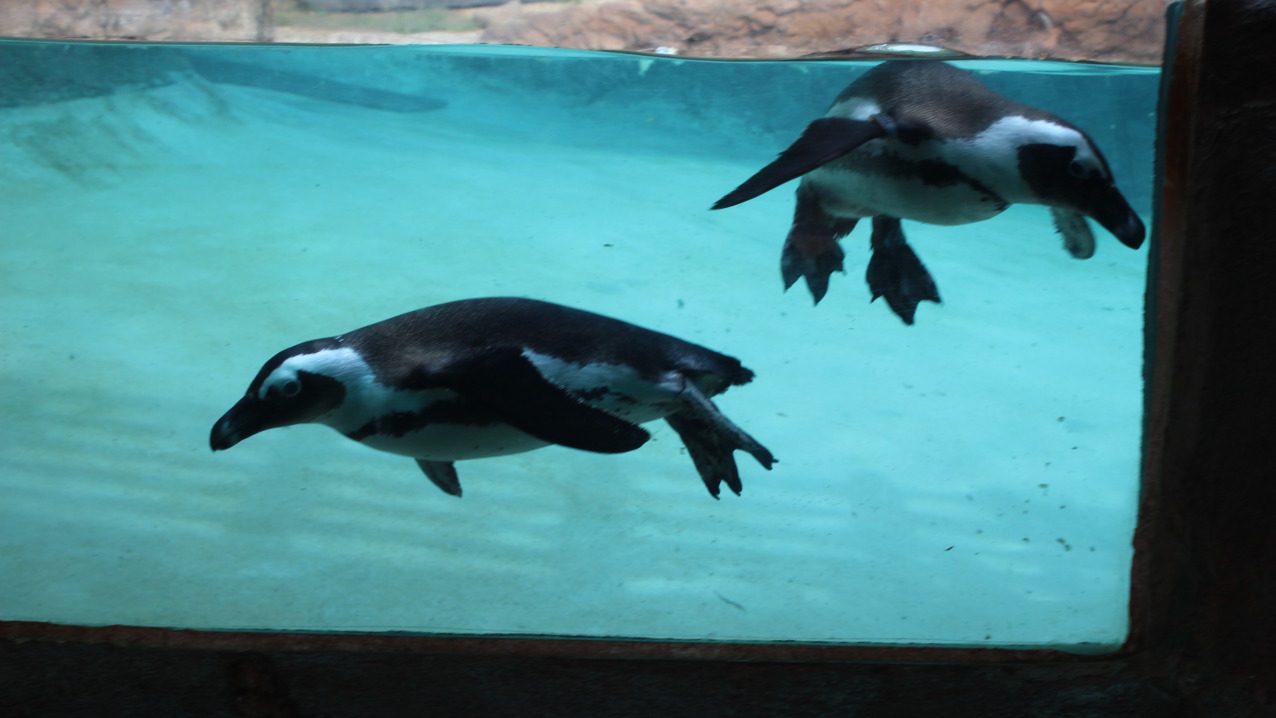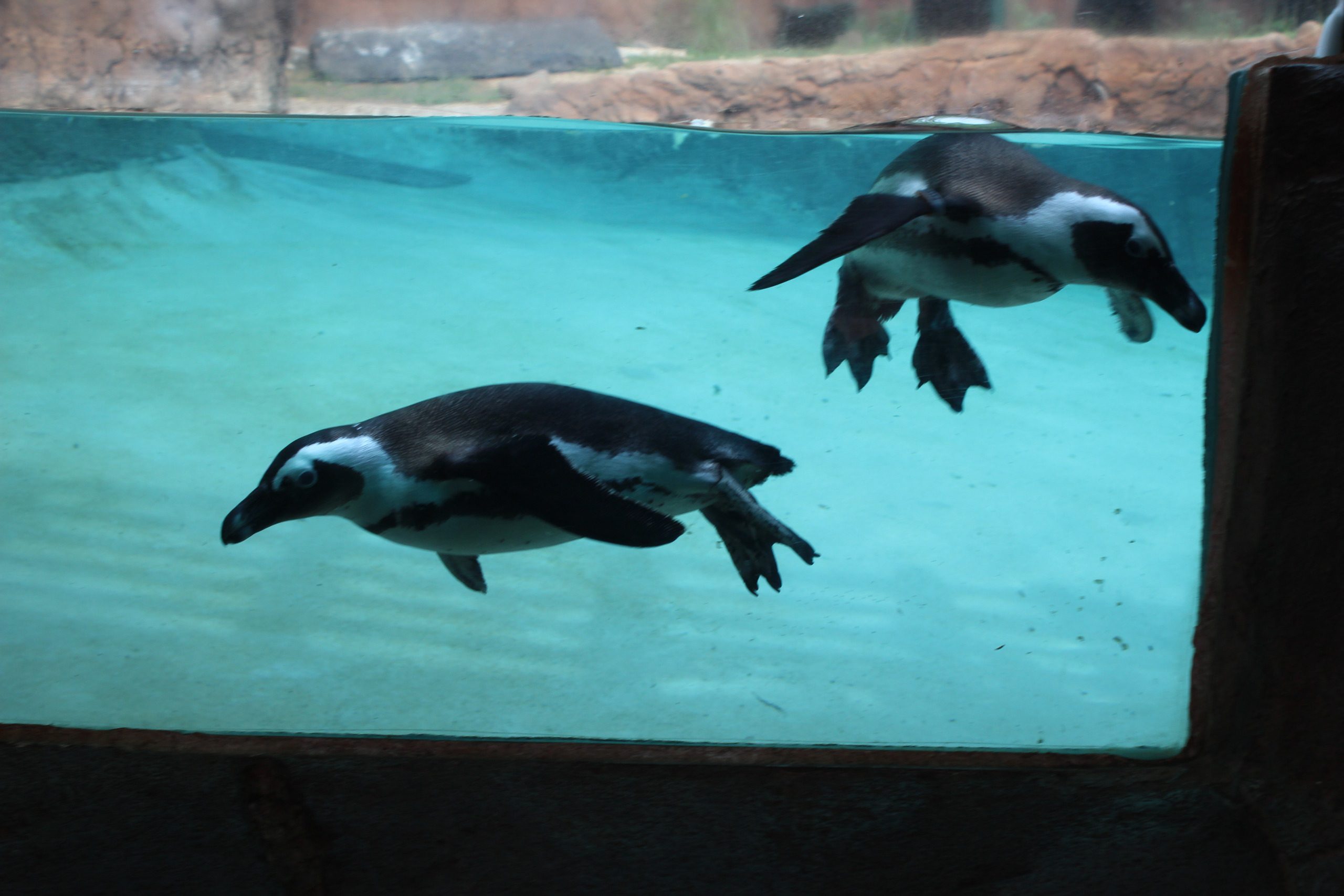Spheniscus demersus
African Penguin
About Me
Scientific Name: Spheniscus demersus
Description
The African Penguins is a non-migratory bird. They live in large colonies and adults reside mainly within 400m of their breeding area. They spend their days feeding in the sea and their nights gathered together on shore.
The African Penguin also known as the Black-Footed Penguin, Jackass Penguin, and the Cape Penguin is a medium sized penguin that stands between 23-24 inches tall. The adults have a black posterior and a white anterior that has a variable amount of black spotting on the breast and belly. On the breast there is also a characteristic black band. Males and females look very similar but can be told apart as males have a deeper and more robust bill. Juveniles are born a slate grey color which deepens into brown and then into a deeper brown as adult patterns start to emerge. African penguins are more agile in water than on land. They are excellent swimmers that can reach speeds up to 12 mph, hold their breath for 2 1/2 minutes, and can dive down 425 ft.
African Penguins live in the rocky coastline of southern Africa, specifically Namibia and South Africa.
The African Penguins is a non-migratory bird. They live in large colonies and adults reside mainly within 400m of their breeding area. They spend their days feeding in the sea and their nights gathered together on shore. When juvenile’s come of age they take to the sea and can travel as far as 2,000 km. They travel alone, in pairs or in small cooperative groups. Those that survive return to their natal colonies to breed or make home in a new colony. They can spend up to 4 months at sea before returning to land to breed and molt.
Adults feed primarily on small school fish such as sardines, anchovy, squid, and some shellfish. At the Honolulu Zoo they enjoy a diet of Capelin, Herring, and Sardines.
African Penguins are monogamous which means they mate for life. Around age 4-6 mating pairs will dig burrows into sand and make nests from guano (Penguin Poo) to lay 1-2 eggs. This protects the eggs and hatchlings from the heat of the sun. For the first month the parents feed their young in the comfort of the burrow. Then the hatchlings leave the burrow and are left alone in groups while the parents go out and forage for food.
The African Penguin is listed as Endangered under the IUCN Red List and it is primarily threatened by food shortages caused by commercial fishing and environmental changes. They are also sensitive to human disturbance of mating grounds, pollution, and environmental disasters such as oil spills.
Did you know not all species of penguin live in Antarctica? They can be found all over the Southern Hemisphere of the globe! The climate here in Hawaii is not too different from what they experience in their natural habitat in Africa, making our zoo a perfect home for them. The Honolulu Zoo is home to a breeding colony of African Penguins established by the Species Survival Program. Each of our penguins has a band with their name around their wing to help us identify them. See if you can identify a few of our feathered friends.
Pearce, W. 2011. Spheniscus demersus. Animal Diversity Web. Accessed January 13, 2017 at http://animaldiversity.org/accounts/Spheniscus_demersus/
BirdLife International. 2016. Spheniscus demersus. The IUCN Red List of Threatened Species 2016: e.T22697810A93641269. Downloaded on 14 January 2017. http://dx.doi.org/10.2305/IUCN.UK.2016-3.RLTS.T22697810A93641269.en.
Other Birds
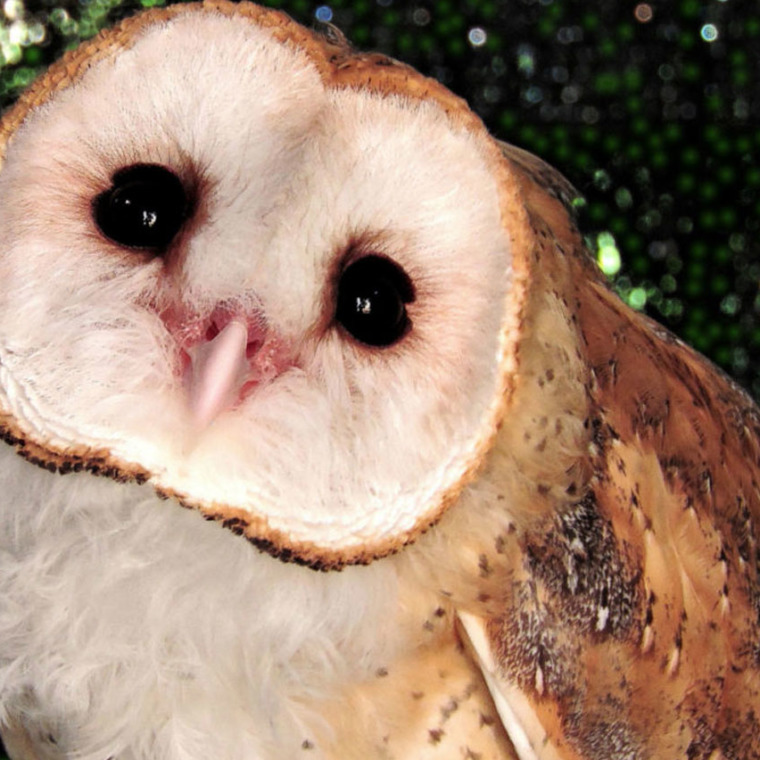
Barn Owls are found throughout the globe, in Europe, Africa, Asia, Austrailia, and the Americas
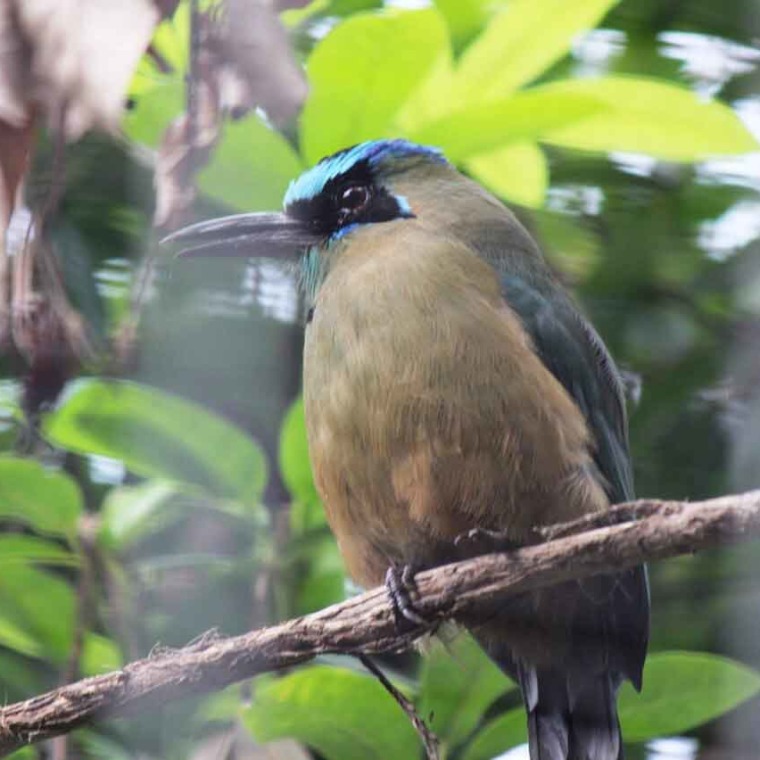
This animal can grow over a foot in length! Motmots possess a serrated beak and red eyes, with a black mask that encircles their heads.
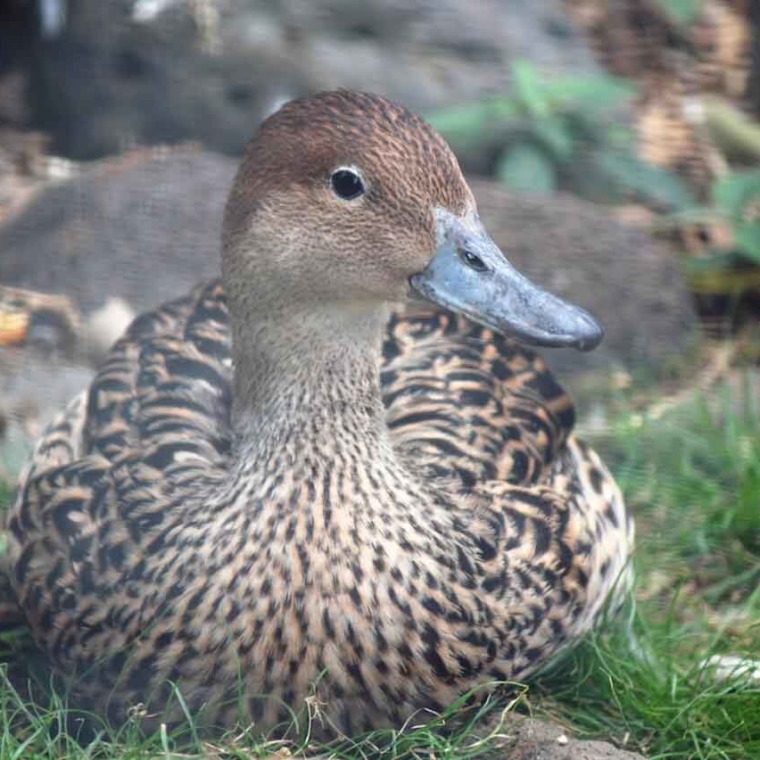
Koloa maoli are very secretive and difficult to observe except in protected areas such as Hanalei National Wildlife Refuge on Kauai.
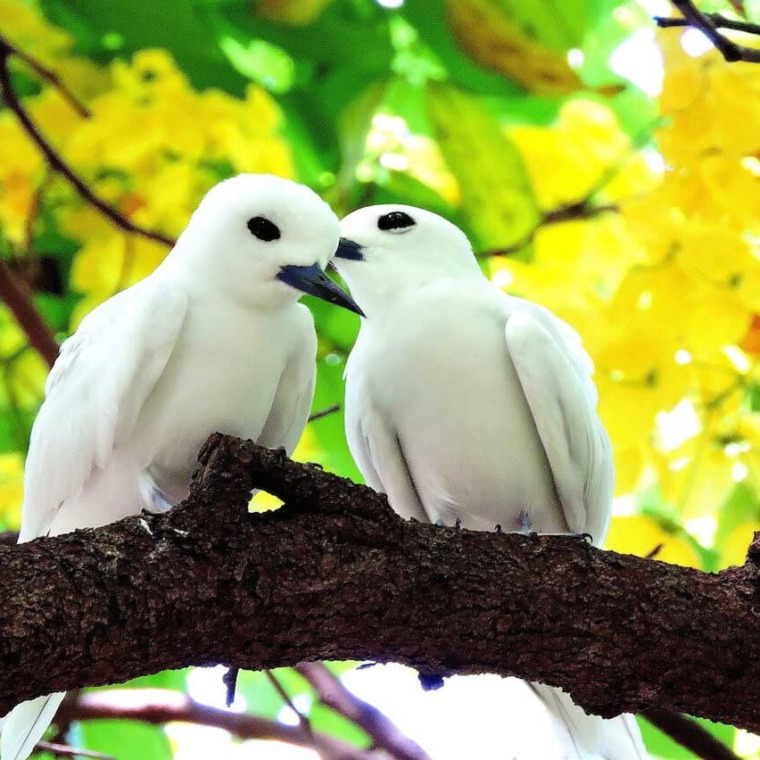
This bird is found primarily on islands, and has a wide ranger across the equatorial band of every ocean on Earth, save for the Arctic Ocean, which does not cross the equator.
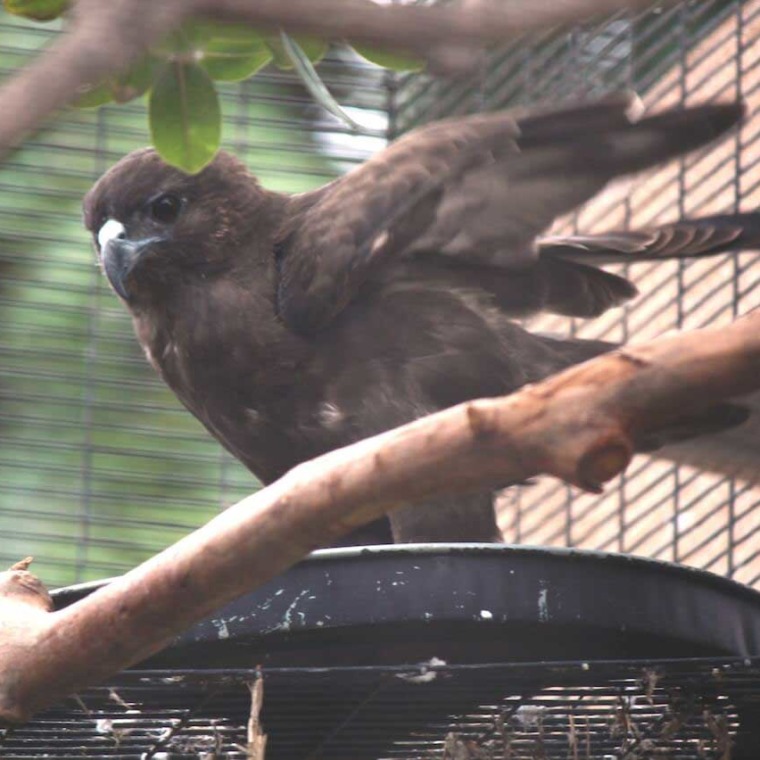
’Io prefer to hunt from tall perches that they use to survey their prey; however, they are known to dive at targets from mid-flight if the opportunity presents itself. are territorial and come together only to breed.


